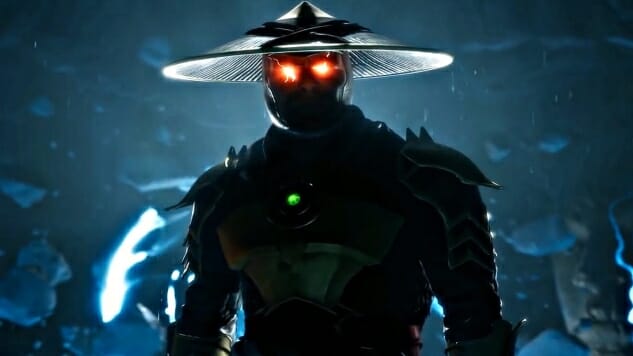
There are a lot of things to praise about Mortal Kombat 11—especially if, like me, you haven’t checked in with the series for a while. The visuals are top notch, the story appropriately theatrical, and the Fatalities are as inventive and over-the-top as ever.
But so far, one of my favorite things about the game is one of the smaller details: the character transitions. As I started to play through the story mode, in an early match with Cassie Cage, I noticed that there was a deft little perspective switch from the cinematic 3D setting into the traditional, 2D fighting arena sideview. It wasn’t a particularly conspicuous maneuver, but it was so well executed I couldn’t help but marvel at it. Most games don’t bother to reconcile the difference between their cinematic and playable sequences, and yet Mortal Kombat 11 slips from 3D to 2D fluidly. I’m so used to the jarring distinction between cutscenes and gameplay that I didn’t really think about a better integration between the two.
Over the past few decades as videogames have transitioned from 2D to 3D (or, in the case of many games and especially this one, 2.5D-ish), a number of innovations have been used to negotiate the differences between competing planes of perspective, some of which have persevered through the subsequent generations to become conventions, like panoramic cameras and lock-on targeting. It’s been interesting to see how some older games try to adapt to a modern format while retaining what defines them; Mortal Kombat’s 2D sideview is outdated but integral to its structure and genre, and in a game of this scale you just can’t do a cutscene in anything but full cinematic 3D. If you’re compelled to accommodate both, this is a fine way to do it.
Of course, not all the scenes pull it off so gracefully and there are a few where the character blocking doesn’t require a lot of adjusting before the fight actually begins. And I’m sure there are many folks who didn’t notice anything special about the perspective transitions at all. But for me, that’s the beauty of it: the switch between those two planes is so subtle, the player doesn’t really have to think about it. A lot of thought probably went into that one little flourish, and the story mode is a lot better off for it. It’s like what they say about editing: if you’ve done your job right, no one knows you did it at all.
The only bad thing about Mortal Kombat 11’s perspective fluidity is that if I look away for a second, the battle starts before I realize the (seemingly endless) cutscene has ended. My ass has been handed to me that way more than once. But overall it helps add a welcome sense of cohesion to a storyline that, with its huge roster of characters and constant demand for conflict, is often chaotic and hard to grasp. It’s not the pinnacle achievement in games design, but in the case of Mortal Kombat 11, it’s definitely an example of how a little can go a long way.
Holly Green is the assistant editor of Paste Games and a reporter and semiprofessional photographer. She is also the author of Fry Scores: An Unofficial Guide To Video Game Grub. You can find her work at Gamasutra, Polygon, Unwinnable, and other videogame news publications.